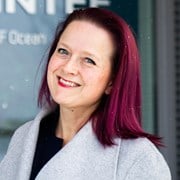In Northern Norway, for example, 56% of the plastic waste came from the fishing industry. In the rest of the country, it's between 42 and 47%.
In Fiskeribladet in October 2023, Lise Gulbrandsen wrote about the Cleanup Report and how 800,000 volunteers participated in cleaning up litter in Norway in 2022. She calls for a national monitoring program to map littering.
This is good – and can be seen in connection with the need to also map all plastic material flows in Norway, which is the goal of Plasticene, led by SINTEF Ocean. In this project, they have worked on mapping the volume of plastic that enters the Norwegian market to begin with. They start at the beginning – not the end.
For it is this plastic that ultimately ends up in the coastal areas where these 800,000 volunteers pick it up, every single year. Because the trash won't stop coming as long as the faucet is running at full blast, as Roger Larsen pointed out in Fiskeribladet on June 8, 2024.
An argument, therefore, is that we must start by understanding where the plastic being used – and eventually ending up in the ocean – comes from, so that we can hold the correct entity responsible for what is not returned. Or reward those who return it, like when we return bottles for a refund!
And we can continue to pick and fish it up forever – 800,000 volunteers or not – because more will keep coming. And more. And more. And for the fishing industry, there is a certain frustration that it could even become costly to pick up trash from the sea in the future.
Especially when incentives like free delivery at 11 ports through the program "Fishing for Litter," which is funded by the Norwegian Environment Agency, are phased out after 2024.
This is despite the plastic problem becoming so challenging that it has been elevated to the global governance level – to the UN. In late 2024, they will hold their fifth negotiation meeting for a new international agreement to stop plastic pollution.
This is an agreement that will also affect the fishing industry and its relationship to littering and cleanup efforts. So much so that this industry has been given its own section of the agreement. This focus on the fishing industry has increased during the negotiations.
In 2022, when global leaders began putting together the framework for the agreement, fishing and aquaculture did not have a leading position as an industry requiring special attention on the agenda.
However, this changed in the spring of 2024 – and text for a dedicated treaty section called "Fishing Gear" was included and discussed.
This viewpoint is translated from norwegian and was first published in Fiskeribladet.



